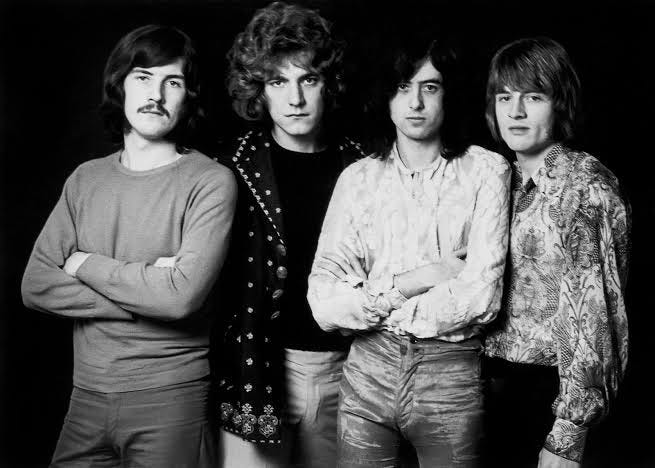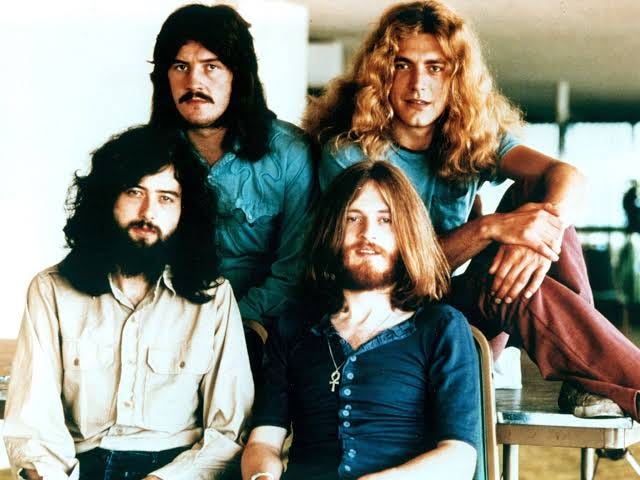What Makes 'Stairway to Heaven' an Enduring Masterpiece?
Exploring the lyrical inspirations, musical journey, and controversies that have shaped Led Zeppelin's 'Stairway to Heaven' into a timeless classic that continues to captivate audiences.
Is There a Stairway to Middle-Earth?
"Stairway to Heaven" is not just a song; it's a tapestry of myths, legends, and cultural influences. One of the most intriguing aspects of this Led Zeppelin classic is its lyrical inspiration. While the song has been dissected by fans and critics alike for decades, its roots in J.R.R. Tolkien's "The Lord of the Rings" have always been a subject of fascination.
Long before Peter Jackson brought Tolkien's world to the big screen, Led Zeppelin's band members were ardent fans of the epic fantasy novel. Songs like "Ramble On," "The Battle of Evermore," and "Misty Mountain Hop" bear the unmistakable imprint of Middle-earth. But what about "Stairway to Heaven"? According to some Tolkien buffs, the song's lyrics echo the "The Tale of Aragorn and Arwen," a love story told in the appendix of "The Lord of the Rings." The song's mystical and abstract nature lends itself to this interpretation, adding another layer to its already complex narrative.
However, Robert Plant, the lyricist and lead singer, has a different take. He once revealed that the song's lyrics were inspired by Lewis Spence’s "Magic Arts in Celtic Britain," a book delving into occult beliefs. Plant believes the power of "Stairway to Heaven" lies in its "abstraction." In his words, "Depending on what day it is, I still interpret the song a different way—and I wrote the lyrics."
This abstraction is what makes "Stairway to Heaven" a song for the ages. It's a lyrical Rorschach test, open to interpretation, and that's precisely what makes it so enduring. Whether you see it as a journey to Middle-earth or a delve into Celtic mysticism, the song offers a stairway to multiple worlds, each step leading to a different interpretation.
So, is there a stairway to Middle-earth? The answer is as elusive as the song itself. While Tolkien's influence cannot be discounted, the song's lyrical depth offers multiple avenues for exploration. In the end, "Stairway to Heaven" serves as a mirror, reflecting the thoughts and beliefs of those who listen, making it a timeless piece that continues to captivate audiences worldwide.
From Recorders to Rock: What was with this Musical Journey?
"Stairway to Heaven" is a musical odyssey that defies the conventional structure of rock songs. It's a sonic landscape that evolves from a gentle acoustic melody into a full-blown electric crescendo, and each member of Led Zeppelin played a pivotal role in crafting this masterpiece.
The song kicks off with an instrument you'd least expect in a rock anthem—a recorder. John Paul Jones, the band's bassist, traded his four-string for this elementary school staple, infusing the song with a medieval flourish. Jimmy Page, the guitarist, has described this opening passage as a "poor man's" version of Bach's "Bourrée in E minor." The recorder sets the stage for a song that is anything but ordinary, inviting listeners into a world that transcends time and genre.
As the song progresses, the acoustic guitar takes center stage, laying the foundation for Robert Plant's haunting vocals. The transition from acoustic to electric is seamless, a testament to the band's musical prowess and vision. Jimmy Page would work on the song in an 8-track studio he had installed in his boathouse, experimenting with different sections on the guitar. His iconic guitar solo serves as the climax of the song, a moment that has been etched into the annals of rock history.
But what makes "Stairway to Heaven" truly extraordinary is its collaborative spirit. While Page and Plant often receive most of the credit, John Paul Jones and drummer John Bonham were instrumental in shaping the song's intricate structure. Bonham's drumming, in particular, adds a rhythmic complexity that elevates the song to new heights.
In a genre often dominated by power chords and catchy hooks, "Stairway to Heaven" stands as a testament to the limitless possibilities of rock music. It's a song that defies categorization, a musical journey that takes listeners from the pastoral to the cosmic, from recorders to rock, and everything in between.
What Devil’s Are In The Details?
"Stairway to Heaven" is not just a song; it's a cultural phenomenon wrapped in layers of myth and controversy. From its inception, the song has been the subject of numerous urban legends, the most infamous of which is the claim of "backmasking"—the supposed hidden messages when the song is played backward.
In 1982, televangelist Paul Crouch ignited a firestorm when he claimed that the song contained satanic messages. According to Crouch, a verse beginning around 4:19 offers a hidden message when played in reverse: "Here’s to my sweet Satan/The one whose little path would make me sad, whose power is Satan/He will give those with him 666." The claim was met with skepticism and even ridicule, but it added another layer of mystique to a song already shrouded in enigma.
Led Zeppelin's recording engineers were quick to dismiss these allegations. In the book "Hammer of the Gods," one of the engineers offers this rebuttal: "Why would they want to put satanic messages in a song that is already a hit? It doesn't make sense." Despite the controversy, the song's popularity soared, becoming the most requested song on rock radio during the 1970s.
But the myths don't end there. "Stairway to Heaven" has also been the subject of legal battles over its originality. The band Spirit claimed that the song's iconic opening riff was lifted from their song "Taurus." While the case was eventually dismissed, it raised questions about the fine line between inspiration and plagiarism in the world of rock music.
The controversies and myths surrounding "Stairway to Heaven" only add to its allure. They make us question, they make us think, and most importantly, they make us listen—over and over again. Whether it's the supposed satanic messages or the legal battles, each controversy serves as a stairway leading us back to the song, compelling us to explore its depths and nuances anew
.






